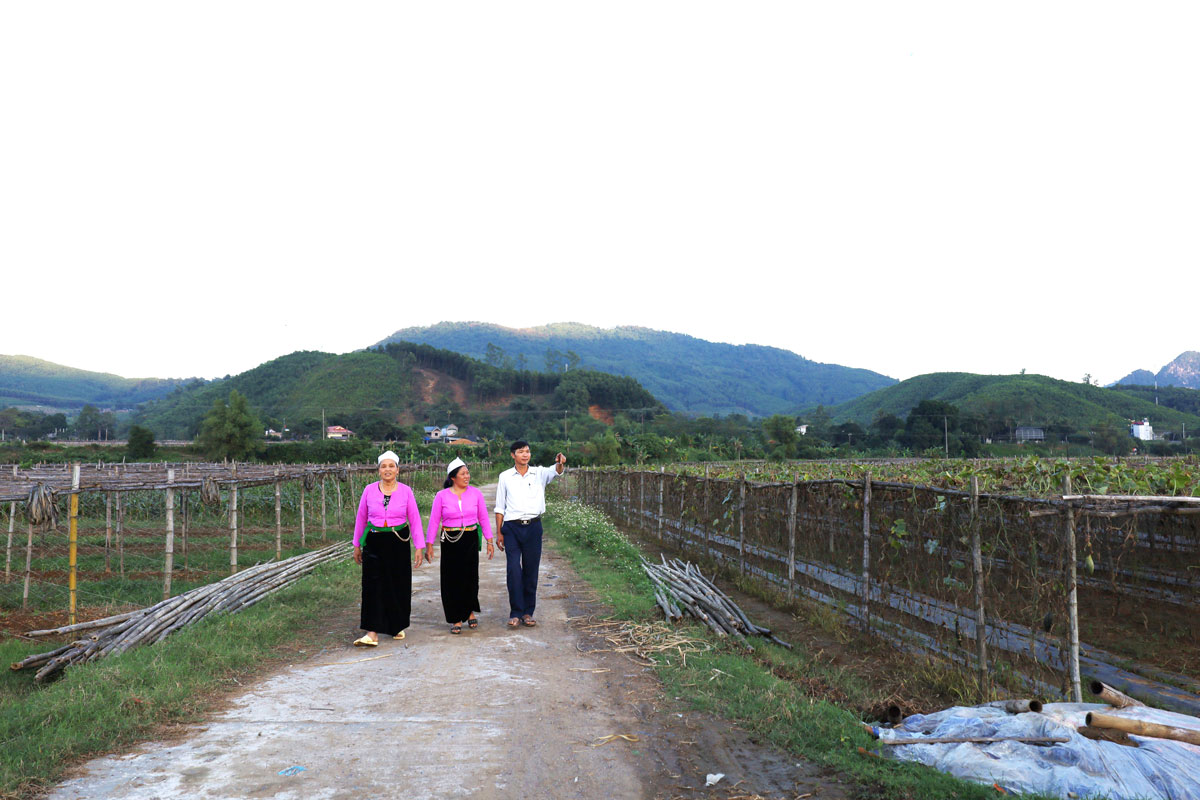


 The inner-field roads in Men Boi village, Kim Lap commune have been
concretized, facilitating locals’ transport of agricultural products.
The inner-field roads in Men Boi village, Kim Lap commune have been
concretized, facilitating locals’ transport of agricultural products.
Investment programmes and projects designed to support specially difficult areas in the district in the 2019 - 2020 period have been extended, focusing on developing and upgrading rural roads and communal houses, and repairing eroded embankments.
A number of key works include a 750m long road in Hop Tien’s Khu village, 450m and 640m of roads in Du Sang commune’s Suoi My hamlet and Xuan Thuy commune’s Khoang Beo village, respectively, a suspension bridge in My Hoa commune, and a communal house in Nuong Dam commune. These works help significantly improve local infrastructure conditions, contributing to promoting socio-economic development in ethnic minority areas.
Statistics show that since 2016, 211 infrastructure facilities in the district were constructed and repaired, including 82 roads and 76 cultural houses for community activities.
In addition, dozens of billions of Vietnamese dong sourced from the National Target Programme on Sustainable Poverty Reduction were spent on upgrading infrastructure facilities, supporting production development and diversifying livelihoods for locals.
At the same time, the district organised a programme to supply rice seeds and hold training courses on agricultural techniques for local farmers, while providing them with materials, machinery, fertilizers, plants, and breeders for production.
According to Chairman of the district People’s Committee Bui Van Diep, in 2020, despite the impact of the COVID-19 pandemic, the political, socio-economic situation in Kim Boi district remained stable and social security, order and safety ensured.
The implementation of ethnic affair policies has contributed to promoting socio-economic development in the locality, with its infrastructure system upgraded and modernized, and the cultural identities of local ethnic minority groups preserved and promoted.
As a result, the living standards of ethnic minority groups have gradually improved and the rate of poor households has decreased rapidly.
So far, all inter-communal roads in extremely poor areas have been paved with concrete or asphalt, most schools have been built permanently and social services have been improved.
Many production models owned by residents in specially disadvantaged areas have been formed, bringing high economic efficiency.
In 2021, the local authorities will give priority to production development, vocational training, and job creation, so as to increase income for local residents. Attention will also be paid to developing infrastructure facilities in specially-disadvantaged communes and hamlets.
The district aims to increase the income of households participating in the production development project by 20-25 percent a year, and at least 10 percent of households participating in projects for escaping from poverty./.